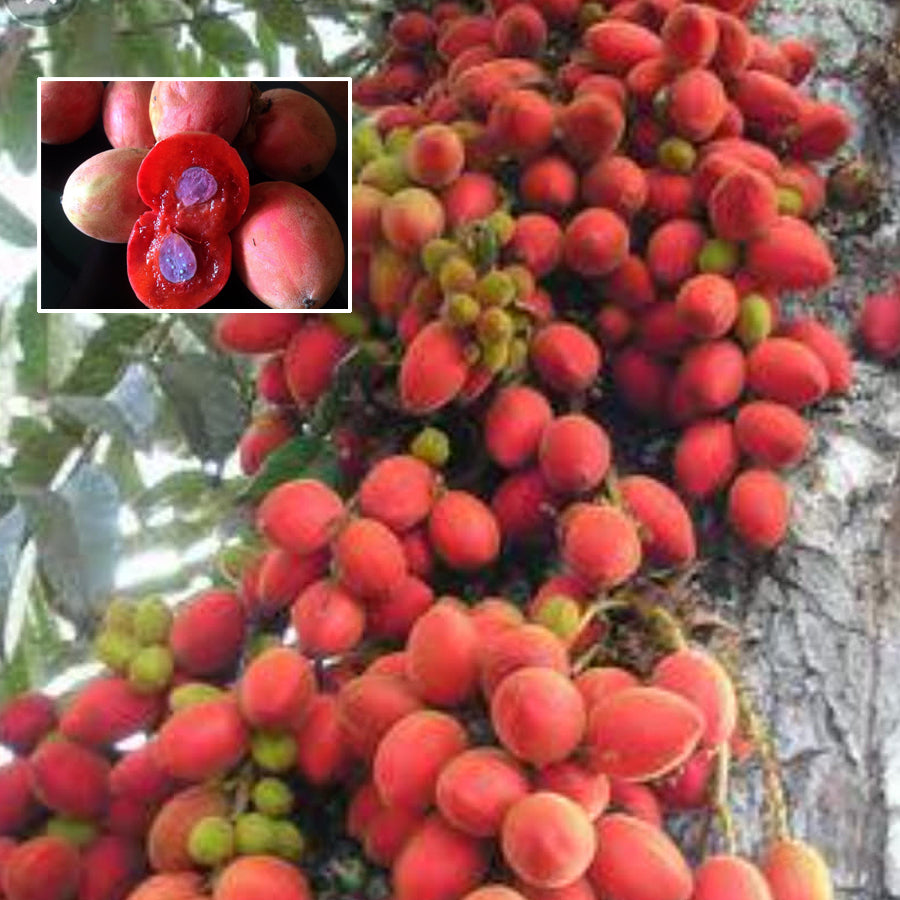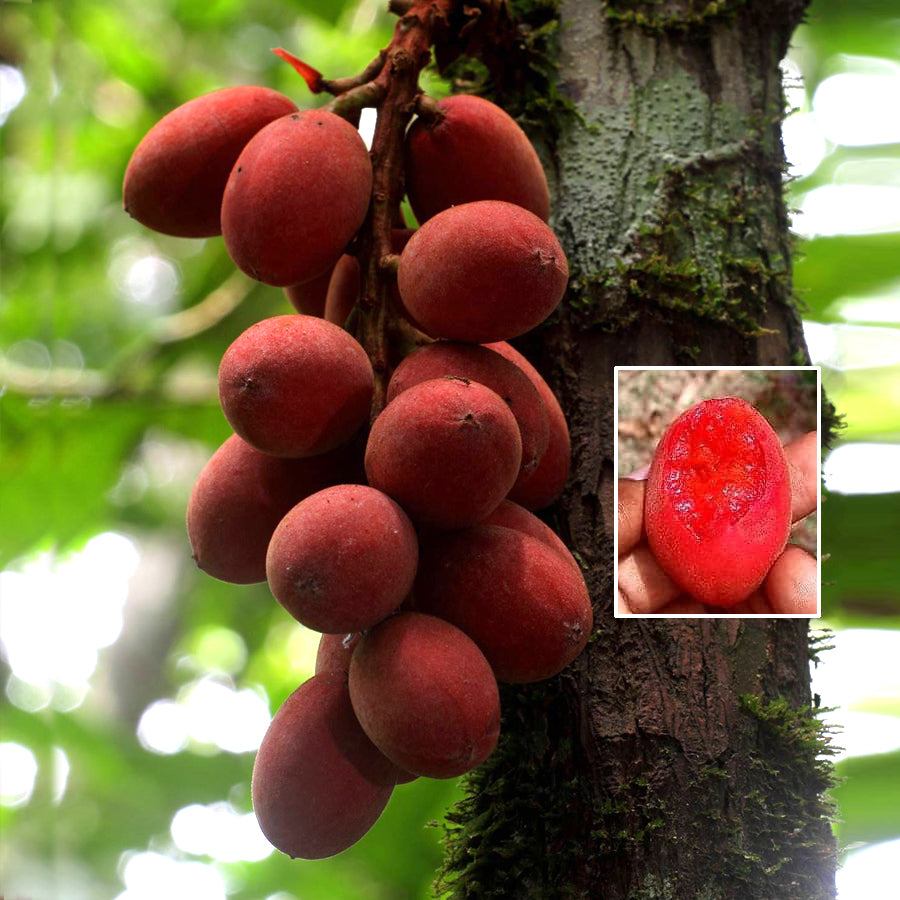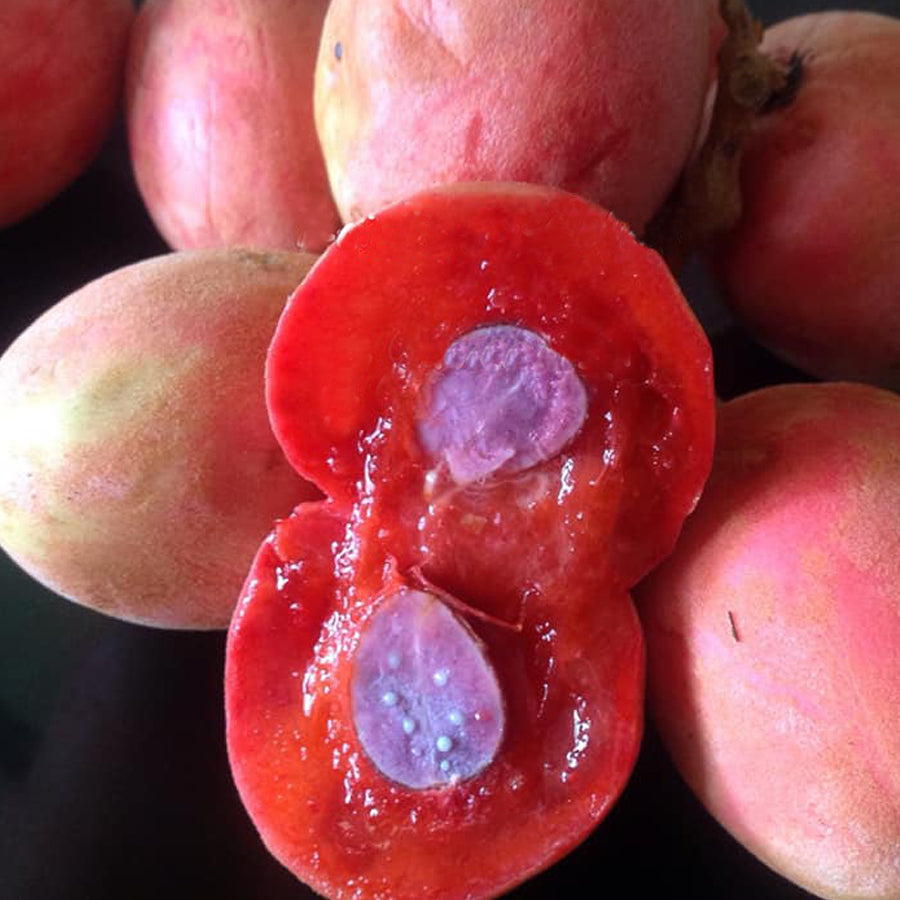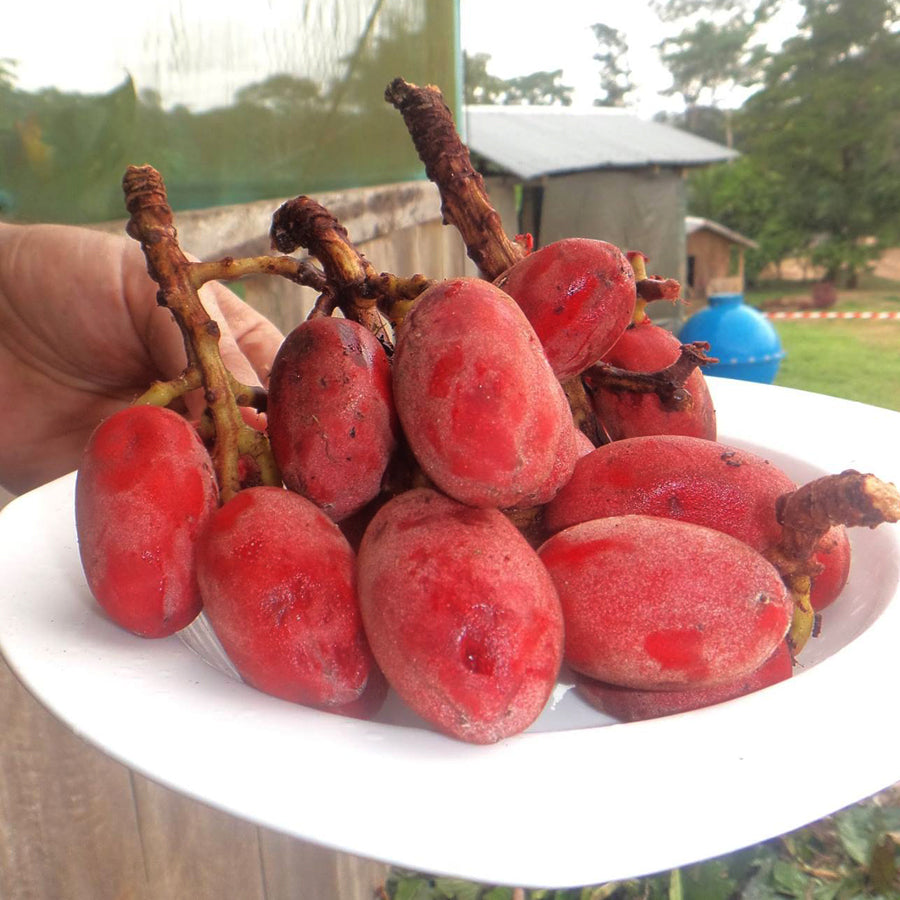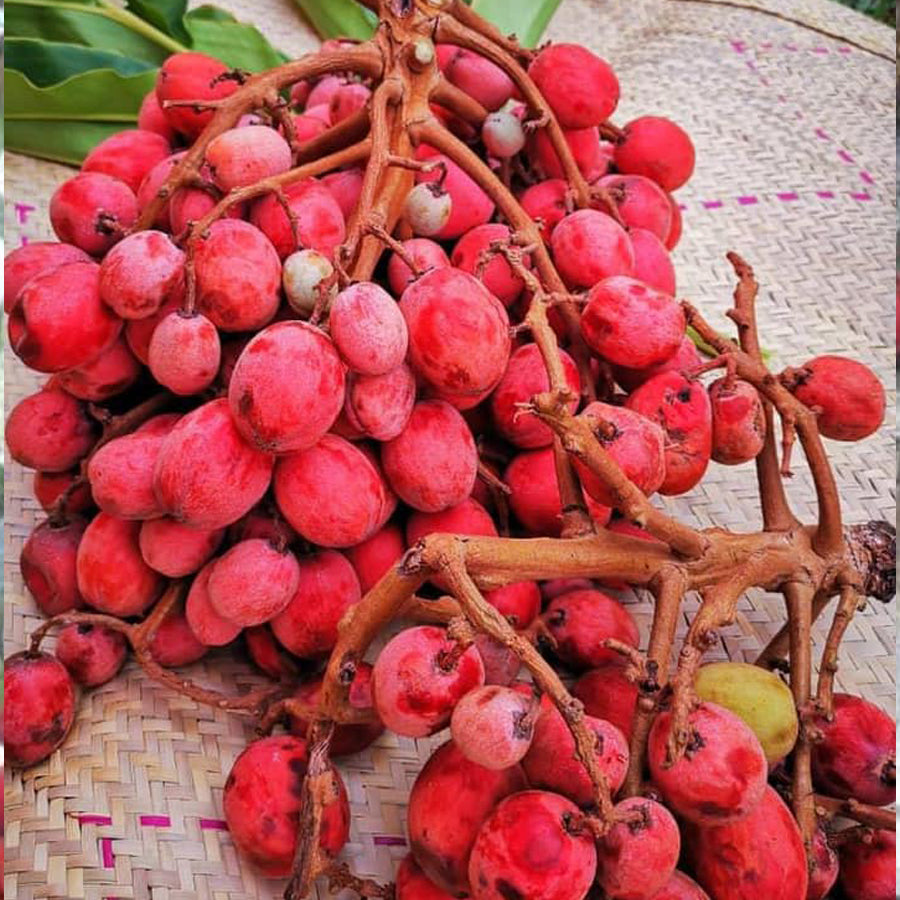Gabon Grape (Trichoscypha Acuminata)
Botanical Name: Trichoscypha Acuminata
Common Name: Gabon Grape
General Information:
Unbranched or poorly branched evergreen tree.
Native to the forests of Gabon, Congo, Cameroon, and Nigeria.
Harvested from the wild for local use as food and medicine.
The pulp is eaten raw, offering a sweet vinous taste.
Used to make jam, and the fruit juice makes a pleasant drink.
Health Benefits:
The citric acid in Gabon Grape creates an alkaline reaction post-digestion, serving as a remedy against cold, cough, and flu.
Bitter properties from 'naringin' aid the digestive process. Contains plant compounds that reduce insulin levels, promoting weight loss.
Lower starch levels make it a safe alternative for those with diabetes. High fiber content contributes to a feeling of fullness.
Eating higher amounts of grapefruit may lower ischemic and intracerebral stroke risk. The fruit is associated with a 19% lower risk in women who consumed higher quantities.
Grapefruit may increase cellular energy, reducing fatigue and lethargy. High water content helps keep the skin supple and reduces burning sensations during fever.
Regular intake, as shown in lab rats, prevented osteoporosis. Rich source of vitamins and minerals essential for normal growth and overall well-being.
Contains biologically active compounds aiding in chronic disease symptoms. Pink-and-red grapefruit is higher in antioxidants, preventing cell damage. Effective in lowering triglycerides, a type of fat found in the blood.
Cultivation Details:
Bloom Time/Fruiting: 3 to 4 Years
Maintenance Required: Moderate
